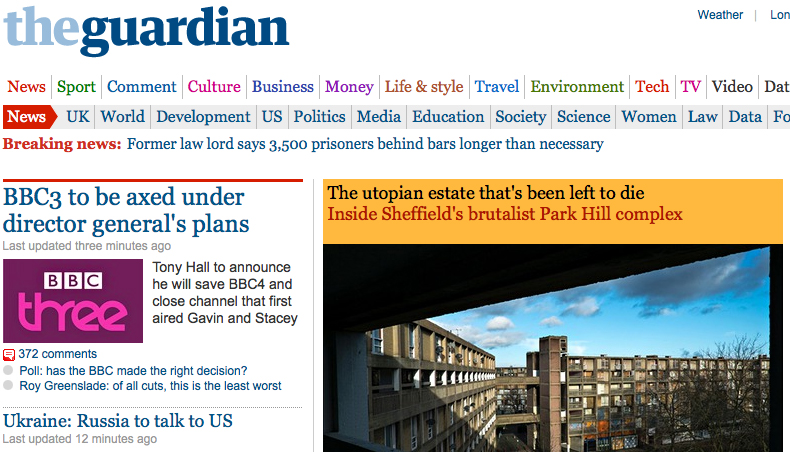Media jobs: paywall vs free newspaper websites
 In today’s Evening Standard, Roy Greenslade makes a case for metered paywalls for newspaper websites. As he says, it is the pragmatic (rather than dogmatic) approach: users who get past the maximum number of articles each month are required to subscribe. This has several commercial benefits, not least that it does not hugely impact visitor numbers through redirection from Google and others. Advertisers, therefore, are happy; and potential subscribers become used to the service and are more likely to subscribe – it may even help preserve a few media jobs.
In today’s Evening Standard, Roy Greenslade makes a case for metered paywalls for newspaper websites. As he says, it is the pragmatic (rather than dogmatic) approach: users who get past the maximum number of articles each month are required to subscribe. This has several commercial benefits, not least that it does not hugely impact visitor numbers through redirection from Google and others. Advertisers, therefore, are happy; and potential subscribers become used to the service and are more likely to subscribe – it may even help preserve a few media jobs.
Greenslade notes that, since telegraph.co.uk introduced its ‘soft’ paywall in March, it has remained the country’s third best visited newspaper websites (behind the free to access Guardian and Daily Mail websites).
It is a technique pioneered in the UK – after much indecison – by the FT, which now has over 600,000 online subscribers. After similar debates, the New York Times recently alighted on the same model, and now has 700,000 subscribers – and is adding 100,000 each year. In 2003, I met the then Editor in Chief of the NYT’s website, and the debate on business models was raging – it has taken a good ten years to resolve. But pragmatism has won out.
And so to the question of dogmatism. At one end, guardian.co.uk; at the other, the Murdoch websites, recently imprisoned behind razor-wire-topped paywalls with machine-gunners at each corner. GMG claims that it earns £40m in advertising revenues each year from its websites, with other income from mobile apps and e-commerce taking the overall revenues up to £56m. Meanwhile The Times has an estimated 130,000 subscribers and its advertisers have largely deserted; so an assumption of £14m in subs revenues with a few extra million in advertising does not seem unreasonable. From those figures, it would seem that the Guardian has the advantage. Whatever the gloss, both organisations are losing money on their websites – and that with most of the headcount costs being firmly carried by their print parents.
There is no simple answer: I have argued before that unless the publication has compelling unique content which the user cannot live without, people are unlikely to subscribe. But the counter argument is obvious: people have been doing this for centuries by choosing to buy a newspaper on a regular basis. It is a habit. Murdoch’s paywall does not allow the habit to form; The Guardian’s approach allows you to get your habit without paying. Metered usage seems the best way to satisfy publishers and create news brand junkies.
The irony, of course, is that Greenslade made his observations in a free newspaper, and that you can revisit his thoughts on a free website. Perhaps this signals an end to the Lebedevs’ attitude of largesse; look for paywalls at standard.co.uk soon.
Martin Tripp Associates is a London-based executive search consultancy. While we are best-known for our work in the TMT (technology, media, and telecoms) space, we have also worked with some of the world’s biggest brands on challenging senior positions. Feel free to contact us to discuss any of the issues raised in this blog.